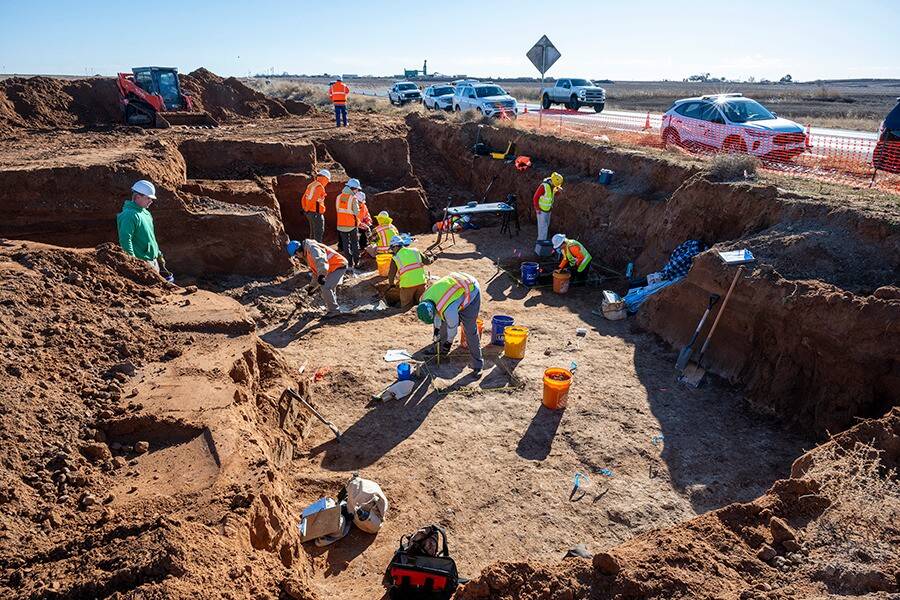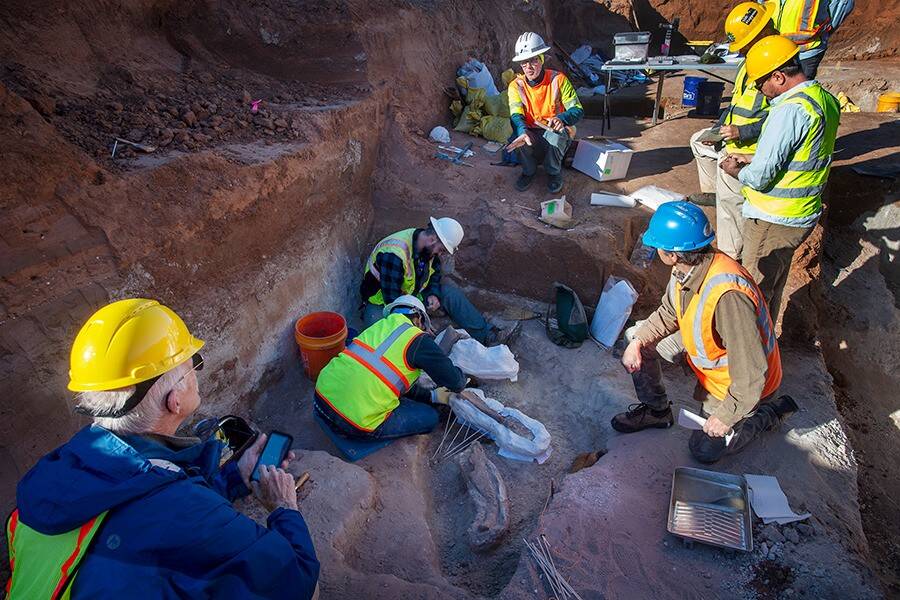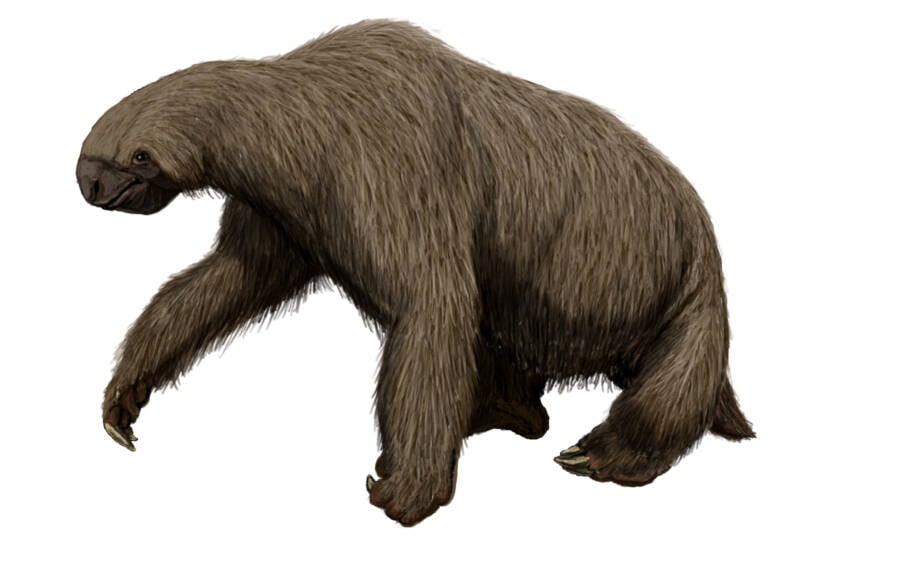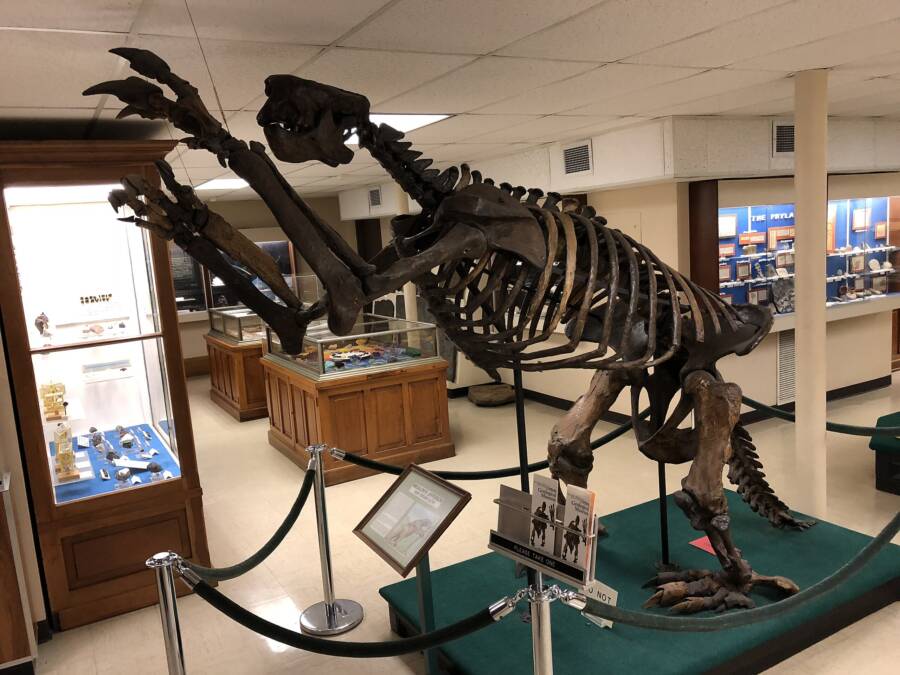Large prehistoric animals like the giant ground sloth were commonly found in the area that's now Texas during the Ice Age, which ended 11,700 years ago.

Texas Department of TransportationThe site in Texas where archaeologists came across the remains of a prehistoric giant sloth.
They say everything is bigger in Texas. But during recent road construction in the state, archaeologists came upon a truly gargantuan discovery: the remains of a prehistoric giant ground sloth.
Archaeologists were able to identify the ground sloth by its tooth, but they’re still examining a number of other bones at the site that may belong to “different animals such as mammoth or mastodon.”
The Prehistoric Giant Ground Sloth In Texas

Texas Department of TransportationArchaeologists found the tooth of a giant ground sloth among other prehistoric bones.
According to a press release from the Texas Department of Transportation, the remains of the prehistoric ground sloth were found during an ongoing road construction project for Loop 88 in Lubbock. Because Texas has other sites with evidence of prehistoric humans and megafauna, archaeologists were called in for a preemptive excavation.
During the dig earlier this year, archaeologists excavated bones from the site and took geologic and sediment samples for further study. Among these samples, they found the tooth of a prehistoric giant ground sloth. But the other bones found at the site require further study to see if they also belong to giant ground sloths or to different prehistoric animals.
“We know we’ve found giant ground sloth by its distinctive tooth,” Chris Ringstaff, a project planner with the Texas Department of Transportation’s environmental affairs division, explained. “Whether all the bones are giant ground sloth or there are different animals such as mammoth or mastodon, we’re not sure. Paleontologists will give us positive identification.”
Indeed, Texas was once rife with prehistoric megafauna.
The Wild Animals Of Texas During The Ice Age

ДиБгд/Wikimedia CommonsMegalonyx wheatley, a ground sloth that lived in North America during the Ice Age.
As the Texas Department of Transportation notes, northern Texas is home to many playas, the remnants of Ice Age-era lakes. Thousands of years ago, these lakes were water sources for both humans and animals.
One of these animals was the giant ground sloth. According to the National Park Service, North America had two varieties of ground sloth: Nothrotheriops shastensis, or the Shasta ground sloth, and Megalonyx, or large clawed ground sloth. The Shasta ground sloth weighed up to 550 pounds, while the large clawed ground sloth could grow to more than a ton.
Giant ground sloths like these went extinct some 11,000 years ago — near the end of the Ice Age — possibly due to human activity.
As such, archaeologists at the Loop 88 site had to also look out for evidence of prehistoric human activity alongside the megafauna — which, if found, would be a first for a Texas Department of Transportation project. It would also mean delaying the construction of the Loop 88 road in Lubbock, as finding prehistoric human activity would merit further investigations.
“If the site involves humans, we have to address road construction impacts under state and federal law,” Ringstaff explained in the press release. “If the site has no artifacts and dates to a time well before humans, [the Texas Department of Transportation] will recommend no further work, and the project can proceed to construction.”

Fuzheado/Wikimedia CommonsThe skeleton of a prehistoric giant ground sloth (Megalonyx jeffersonii) that was mounted in 1896. It’s on display at the Orton Geological Museum in Columbus, Ohio.
For now, the Texas Department of Transportation is working with the Museum of Texas Tech University to prepare, identify, and store the bones found at the Loop 88 site. Experts are also studying the dirt collected around the bones in search of “micro-artifacts.” They’ll use geological dating techniques to determine their age.
At the end of the day, whether or not archaeologists end up finding evidence of human activity at the site, the discovery of the giant ground sloth tooth and the other prehistoric bones is exciting.
“We’re here to get the road built,” Ringstaff remarked. “But who doesn’t love digging up big ol’ animals?”
After reading about the remains of the prehistoric giant ground sloth that were found in Texas, discover the story of the Megatherium, the 13-foot giant sloth of the prehistoric Amazon. Or, see Jacob’s Well, the stunning — and dangerous — underwater cave system in Central Texas.





